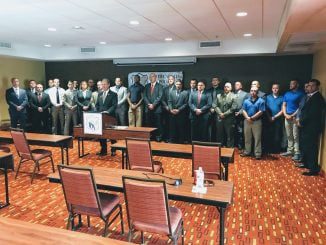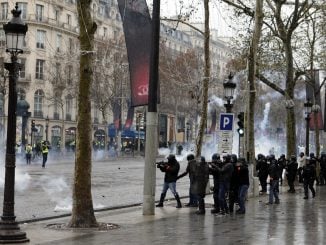Law enforcement agencies across the country experienced a wave of retirements and departures and are struggling to recruit the next generation of police officers in the year since George Floyd was killed and protests erupted around the nation.
Mass protests against law enforcement and calls for reforming or defunding the police, as well as the coronavirus pandemic, took their toll on officer morale. The rate of retirements at some departments rose 45% compared with the previous year, according to new research on nearly 200 law enforcement agencies conducted by the Washington-based Police Executive Research Forum and provided to The Associated Press. At the same time, hiring slowed by 5%, the group found.
The wave comes as local lawmakers have pledged to enact reforms — such as ending the policies that give officers immunity for their actions while on-duty. And recruiters are increasingly looking for a different kind of recruit to join embattled departments.
“Days of old, you wanted someone who actually had the strength to be more physical,” Atlanta Police Chief Rodney Bryant said. “Today’s police officers, that’s not what we’re looking for.”
But the climate today, coupled with increases in crime in some cities, is creating what Chuck Wexler, the head of the Police Executive Research Forum, called a “combustible mixture.”
It’s creating “a crisis on the horizon for police chiefs when they look at the resources they need, especially during a period when we’re seeing an increase in murders and shootings,” Wexler said. “It’s a wake-up call.”
The data from Wexler’s organization represents a fraction of the more than 18,000 law enforcement agencies nationwide and is not representative of all departments. But it’s one of the few efforts to examine police hiring and retention, and compares it with the time before Floyd’s killing in Minneapolis on May 25, 2020.
Researchers heard from 194 police departments last month about their hires, resignations and retirements between April 1, 2020, and March 31, 2021, and the same categories from April 1, 2019, to March 31, 2020.
By comparison, the changing public attitude on policing is well documented. In the past year, as many as half of American adults believed police violence against the public is a “very” or “extremely” serious problem, according to one poll conducted by The Associated Press-NORC Center for Public Affairs Research.
“It’s hard to recruit the very people who see police as an opposition,” said Lynda R. Williams, president of the National Organization of Black Law Enforcement Executives, who previously worked on recruitment efforts for the Secret Service.
Bryant knows firsthand. In the weeks after Floyd’s death, a white officer, Garrett Rolfe, shot and killed Rayshard Brooks, a black man, in the parking lot of a Wendy’s.
In quick succession, Rolfe was fired, the chief resigned and the local district attorney announced charges, including felony murder, against Rolfe — a rare step in police shootings. Some cops left the force, which currently has about 1,560 officers — about 63% of the force is black, 29% white and 5% Latino.
Then came the “Blue Flu” — when a high number of police officers called out sick in protest. Bryant, then the department’s interim chief, acknowledged that it had occurred in Atlanta after Rolfe was charged.
“Some are angry. Some are fearful. Some are confused on what we do in this space. Some may feel a bit abandoned,” Bryant said last summer in an interview at the height of the crisis.
In Dallas, city leaders spent much of the last decade struggling to draw candidates and stem the outflow of officers frustrated by low pay and the near collapse of their pension fund.
Despite those efforts, the force now stands at about 3,100 officers — down from more than 3,300 in 2015 — a loss at a time when the city’s population has grown to more than 1.3 million. The force is about 44% white, 26% black and 26% Latino. This means officers handle more calls and detectives more cases, all amid increased racial tension.
In 2016, five officers were killed in Dallas by a sniper who was seeking revenge for police shootings elsewhere that killed or wounded black men. Two years later, an off-duty officer fatally shot her neighbor in his home. She was fired and later was sentenced to a decade in prison for murder.
Mike Mata, president of the Dallas Police Association, said the national political climate and local pay and pension issues have been compounding challenges to hiring in Dallas.



